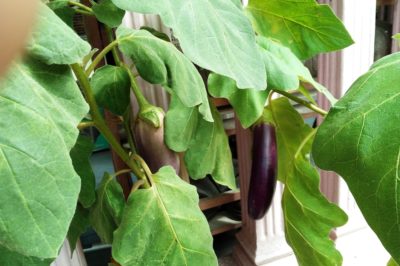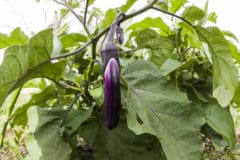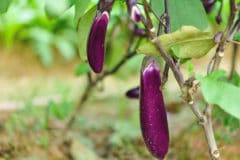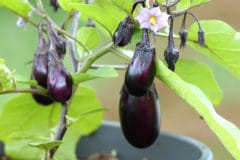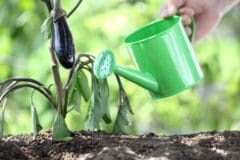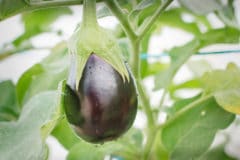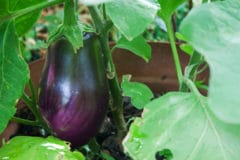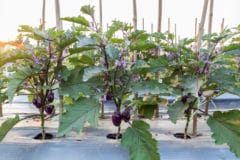Choosing the Right Size Container
When choosing a container for your Japanese eggplant, make sure it has enough space to support the plant’s root system. Also, make sure there is drainage at the bottom of the container to prevent fungus growth, and root rot from too much moisture. Keep in mind that an eggplant bush can grow up to 4-feet tall, so choose a container that holds at least 5 gallons. Each eggplant needs 12 to 14 inches to grow in a container. You can plant three eggplants in a 20-inch pot.
Best Type of Container
Once you decide on the size of your eggplant container, you can opt for a glazed or unglazed surface.
- Unglazed – These containers absorb water, which makes them dry out quicker. If you’re good about regularly watering your plants, you don’t have to worry about using an unglazed container.
- Glazed – If you forget about watering on occasion, using a glazed eggplant container can help keep the soil moist for a longer time. If you’re using a glazed container, make sure the drain holes are open, so excess water doesn’t pool at the bottom of the container.
Add Soil to the Container
Use a fast-draining, potting soil, rich in nutrients in the eggplant container. One of the good things about container planting is that it helps prevent soil-borne fungus, diseases and pests from invading your plant’s foliage. If your soil is light, remember to water it frequently, especially in the hot weather. When planting your Japanese eggplant seedling, cover the whole root ball with soil, and water it thoroughly. Some eggplant containers require watering a few times every day to keep the soil moist. Applying mulch on top of the soil helps retain moisture in the pot.
Where to Place the Container
Since Japanese eggplants require full sun for at least 6 hours every day, choose an unobstructed spot for your container. If the temperature in your area rises above 90°F (32°C), move the pot into the shade, or cover your plant with garden fabric. On the other hand, if it gets chilly, move your Japanese eggplant to a warm area until the weather gets warmer. Your Japanese eggplants should be ready for picking in 50 to 60 days.
